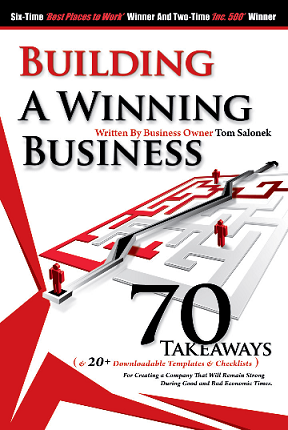Building a Winning Business – Only Hire Top Performers
 Maybe this sounds like a tall order (especially if times are good and great employees are hard to find). Regardless of the business climate, making a commitment to hire only top performers is a strategy worth pursuing. It’s the only way to ensure that you can deliver the best service or product to your customers—and the only way I know to stay competitive, especially in an age of global outsourcing.
Maybe this sounds like a tall order (especially if times are good and great employees are hard to find). Regardless of the business climate, making a commitment to hire only top performers is a strategy worth pursuing. It’s the only way to ensure that you can deliver the best service or product to your customers—and the only way I know to stay competitive, especially in an age of global outsourcing.
.
.
.
.
If you think you can get by with mediocre employees, you’ll soon see your profit margins eroding, since the only way you’ll be able to compete is to lower prices.
- It pays to be picky. By this I mean, only hire people you rate a 9 or 10 on a 10-point scale. In my industry, the data state that a top programmer will produce eight times more work than an average or poor performer!
- Great performers are rarely unemployed or desperate for work. For this reason, it’s important to build a virtual bench of possible candidates who are exceptional at their jobs but who are happy in their current positions. Eventually things may change and they will be interested in finding a new position. Conversely, if a top performer leaves your organization on good terms and later wants to return, don’t hesitate to take him back. This sends a powerful message to everyone about your company being a great place to work.
Tom’s Takeaway: “Although it takes time and patience on the front end to find and recruit top performers, you’ll get this investment back with hefty dividends over time.”
—
Thoughts Since the Book
- Without a doubt, this takeaway–along with daily huddles–are on the short list when people ask me which of the 70 takeaways to first implement.
- Given a great plan or a great team, eight days a week, I’d choose the latter. Great people are the difference.

 ntertech was named one of
ntertech was named one of